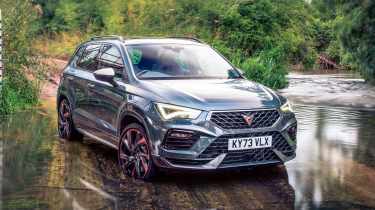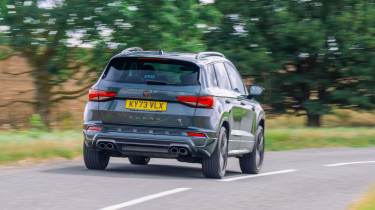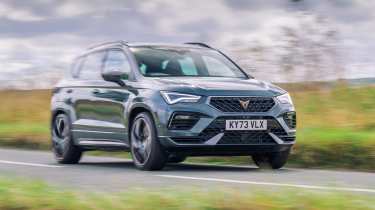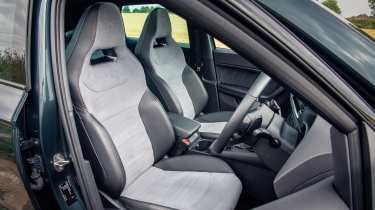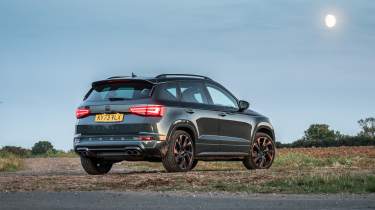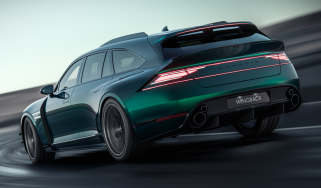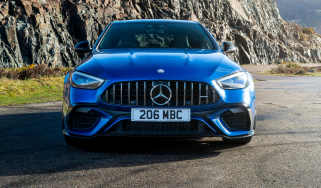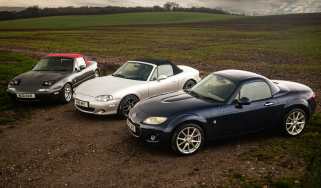Cupra Ateca VZN Fast Fleet test – four months with Cupra's hot crossover
It's not Cupra's sexiest SUV, but is it the firm's most underrated? A long-term test holds the answer
What was the first model to be launched by the Cupra brand when it embarked upon its solo career back in 2018? I still find it slightly puzzling that it was not a hot hatch of the kind the name had been associated with, as a suffix, for the preceding two decades. Instead, the interlocking triangles badge was first applied to an SUV: the Ateca.
Six years on, via a facelift and some chassis tweaks in 2021, the Cupra Ateca is still on sale, which leads us to an obvious question: if you’re of an evo mindset but feel you need a compact SUV in your life, is it a car worthy of consideration in 2025? We’ve just spent the past four months with one to find out.
The first thing that would strike you about our long-termer was its colour. At a glance it could be mistaken for yet another grey, but look properly and you’d notice that it was shot through with a hint of deep green. Called Dark Camouflage, it was a properly classy hue that wouldn’t look out of place on some high-end machinery. (I dare you to Paint To Sample it on your GT3 Touring…)
More reviews
The rest of the car was a little less likely to attract a lingering eye. Lacking the distinctive face of the latest Cupras, or their angular, slashed flanks, it attracted precisely zero comments or questions from strangers during its time with us. This was in stark contrast to the pre-facelift Formentor we ran a couple of years ago, which so many people wanted to know more about. Then again, the Ateca’s rather boxy and largely unfussy looks sent out a different message: this was not in any way a frivolous, attention-seeking machine; it was serious about being as practical as possible.
If you missed the four exhaust pipes at the rear – an Akrapovic system, believe it or not, costing an extra £3360 – the only other clues to the performance being concealed were the 20-inch black and copper alloys and the copper-coloured Brembo calipers that sat behind them at the front. The former were part of our car’s range-topping, £52,125 VZN spec and were an inch larger in diameter than the items you get with the £2000 cheaper VZ3 trim. The VZN package also included the aforementioned paint colour (Black Magic being the other choice), a panoramic sunroof and a Beats Audio upgrade for the infotainment (nine premium speakers, a subwoofer, an upgraded amp and some surround-sound tech).
Inside were a pair of bucket seats with centre panels in a Dinamica fabric – a fine microfibre that’s 73 per cent recycled polyester and can also be found on the seats of Lamborghini’s Temerario and the one-piece carbonfibre buckets in Alpine’s A110 R Le Mans, among other sporty applications. Suffice to say, you don’t slide around on it much, and with decent side bolsters giving you a good hug too, the seats set a purposeful tone that almost seemed incongruous – but in a good way.
Helpfully, KY73 VLX arrived with over 6000 miles on the clock, having spent the previous seven months performing other duties on Cupra’s press fleet, so there was no running-in to be done before we could start exploring its performance. Providing propulsion was the VW Group’s 2-litre TSI engine, of course, here developing 296bhp and 295lb ft of torque – values that may sound familiar from the likes of the Cupra Leon and the Mk8/8.5 Golf GTI Clubsport. There was the same seven-speed DSG gearbox too, but with the help of four-wheel drive the Ateca can out-sprint both of those front-driven hatches to 62mph, and by some margin: 4.9sec versus 5.7 (Leon) and 5.6 (Golf). In fact, the Ateca is only three-tenths behind the latest, 328bhp Golf R to that benchmark.
It feels good for it too, although the engine does sound a little more strained as it stretches to the 6500rpm red line (or copper line to be precise) than it does in some other, lighter applications. That said, the Ateca is no Heffalump, with a claimed kerb weight of just 1565kg – on a par with Cupra’s Leon Estate (which also has four-wheel drive) and only 17kg heavier than the Mk8.5 Golf R.
You probably wouldn’t suspect this from the outside, where the Ateca can sometimes look bigger than it actually is. But from the driver’s seat you realise it is actually quite a compact SUV, to the point where you hardly ever think about its size, not in town nor out on a B-road either. It’s only when you get charged the ‘big car’ price at a hand car wash, or spot a hot hatch-sized parking space and have to think twice about whether you’ll be able to squeeze into it, that you’re reminded you’re in something a fraction bigger – around 50cm wider and 10cm longer than a Golf. Otherwise, it felt like it was the optimum size for an everyday SUV.
Handling-wise, while the Ateca wasn’t hot hatch sharp, it could certainly be hustled, and it felt game for it too, willing to engage. It never responded with a feeling that you were asking it to do things it didn’t want to do, or as if it wanted to just roll over or peel the tyres from their rims during cornering. Nor did it resort to a clumpingly firm ride to resist wallow or dive; there was genuine pliancy there.
It could be positioned with supreme accuracy too, never wandering or being deflected an inch left or right here and there, while the brakes were pleasingly easy to modulate accurately, with stronger initial bite than those of the Leon we ran earlier in the year (although admittedly track work may have taken its toll on that car’s stoppers).
Ultimately it would understeer when pushed outside its comfort zone, but get on the power early and generously through a corner and the torque sent rearwards would help neutralise this tendency and keep the car neatly on its line. Sweeping smoothly through a series of bends – even if the tarmac itself wasn’t that smooth – could be satisfying, if not hugely exciting or involving. Ultimately you had to admire its ability, and you’d never say it lacked pace.
In general driving, in the default gearbox mode, the seven-speed DSG was reluctant to change down when encountering a slight uphill gradient or when exiting a roundabout, necessitating an exaggerated shove of the accelerator pedal that seemed mismatched to what was required the rest of the time. If you selected Sport mode for the ’box to try to negate this you could then find yourself cruising through a 30mph zone in third gear with undesirably high revs.
The stop-start system, meanwhile, was annoyingly good at cutting the engine as you rolled up to a junction, leaving you hanging for a second if you had the opportunity to keep moving and switched your right foot back to the accelerator. And, of course, you only remembered to disable stop-start once you’d been caught out…
Even on the 20-inch wheels, ride comfort wasn’t an issue. You could easily leave the suspension in its middle Sport mode for all scenarios, and even Cupra mode wasn’t too punishing. The only giveaway of those upsized alloys was how the car would sometimes ‘skip’ slightly if it encountered a ridge mid-corner.
Fuel economy was admirable, too. A spirited drive might drag it below 20mpg, but you’d usually be in the mid-30s in regular driving, and with light throttle work it was possible to tick off a long journey in the lower 40s.
One oddity for such a practical car was a lack of mounting hoops in the boot for a luggage net, so if you only had a couple of items in there they’d slide all over the generous space available to them. As a result, shopping bags ended up on the back seats to stop them unpacking themselves. Shortly before the car went back I discovered that there were some hoops – hiding beneath the boot floor, so tricky to get at or make use of.
Tech-wise, the Ateca’s age actually gave it an advantage in some respects. For one, it didn’t suffer the curse of lane assist switching itself on every time you started the car. There were also old-school physical dials for the climate control and headlights, meaning you could operate them without needing to take your eyes off the road. And the infotainment predated the VW Group system that has attracted so much criticism in recent years, so was largely trouble-free. Although I never could get my head around why there were two satnav buttons with a flag symbol – one a permanent touch-sensitive item, the other an occasionally appearing digital version – that sometimes did the same thing and other times didn’t.
Such minor quirks aside, the Ateca was a very easy car to live with. It always felt ready and willing to help you go about your daily business without putting obstacles or irritations in the way. But perhaps tellingly, not once during its time with us did I drive it for the sake of going for a drive. I remain unsure why you’d choose an SUV such as this over an estate car that would be equally versatile but more rewarding as a driver’s car. And for almost identical money Cupra has a very good estate that would fit that bill. But if you’ve found a reason why you really must have a rapid, compact SUV, you should put the Ateca on your shortlist

